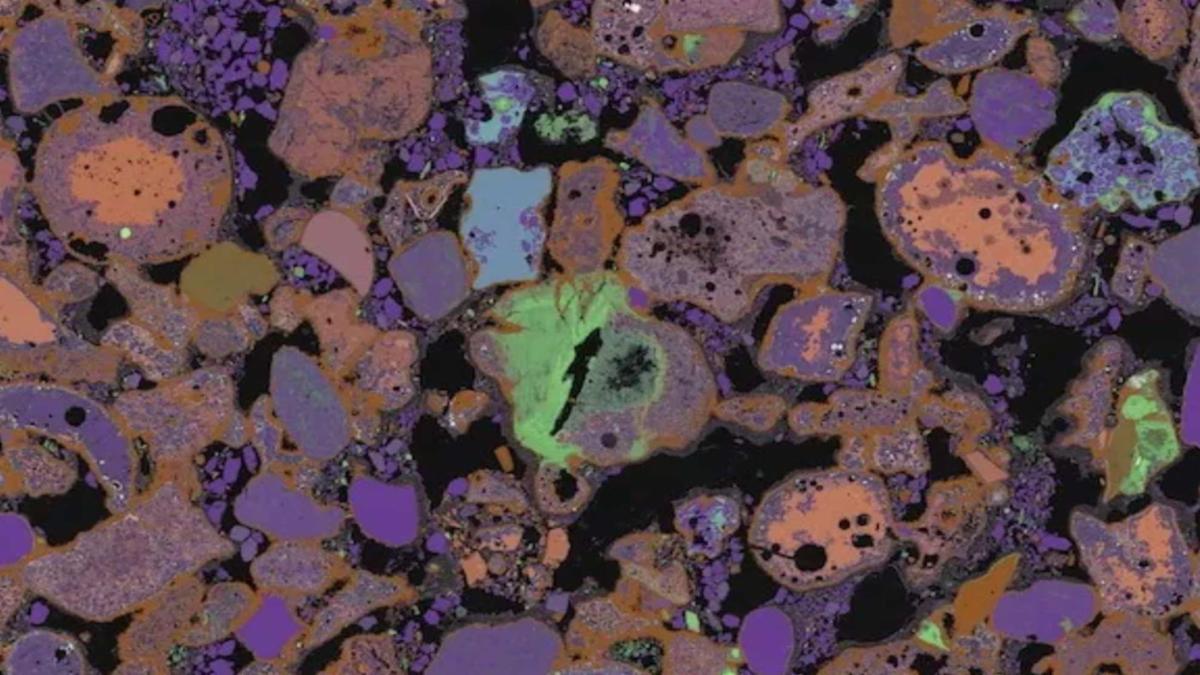What if Earth’s newest geological wonder wasn’t made by volcanoes, tectonic plates, or glaciers—but by us?
In a groundbreaking discovery on the Cumbrian coast of northwest England, scientists have identified a new type of rock forming from industrial waste and plastic pollution—and it’s happening within decades, not millennia. This unexpected creation is reshaping how experts understand Earth’s geology, and what it means to live in the Anthropocene—an era defined by human impact.
“We’re witnessing the planet writing a new chapter in its rock record—and we’re the authors,” says Dr. Jane Taylor, geologist at Lancaster University.
🧪 The Discovery: Nature + Industry = New Rock
The team behind this discovery didn’t set out looking for a new rock. While studying coastal erosion near a disused steelworks, researchers noticed strange hardened masses embedded in the beach. These materials looked like volcanic rock, but closer inspection revealed something bizarre: melted plastic, rusted metal, glass shards, and sand fused together.
They named this hybrid substance “plastiglomerate”, a term first used a decade ago in Hawaii but now confirmed in multiple global locations.
What makes the Cumbrian example unique?
It’s not a one-off. It’s abundant, spreading, and forming rapidly—the first large-scale case in the UK.
⏱️ How Fast Is This Rock Forming?
Unlike granite, which takes millions of years, this rock forms in just a few decades through a process powered by human industry:
-
Steel slag, a waste product from iron production, is dumped on the beach.
-
The slag retains intense heat, often exceeding 1,000°C.
-
As it hits the ground, it melts plastic waste, mixes with beach sand, and traps glass or scrap metal.
-
Over time, this fusion cools and hardens into solid rock.
According to the study published in Geology (2024), the material is geologically stable, meaning it could persist in the Earth’s crust for millions of years.
“We’ve essentially created a new type of sedimentary rock, born from our waste,” says Dr. Taylor.
🕰️ Why It Matters: The Rise of the Anthropocene
For years, scientists have debated when and how to define the Anthropocene—a new epoch where human activity is the dominant force shaping Earth.
This rock may be one of the strongest pieces of evidence yet.
Unlike microplastics or carbon particles, plastiglomerates are visible, tangible, and geologically distinct. They're showing up in multiple places:
-
Hawaii, where lava fused beach plastic
-
Greece, where tourist waste became geological material
-
Indonesia, where volcanic ash and waste combined
“Future civilizations could mine these rocks and see evidence of our era, just as we study fossilized ammonites,” notes climate historian Dr. Elias Moreau.
🔍 Psychological & Environmental Impacts
The implications go beyond science. These discoveries have sparked concern—and curiosity:
-
Psychological: For some, the idea of leaving behind indestructible garbage in stone causes eco-anxiety.
-
Philosophical: Others argue it’s proof that humanity is now a geological force.
-
Environmental: The rock’s stability raises concern—will these materials leach toxins into ecosystems?
In 2025, researchers from the University of Cambridge launched a long-term study to track how these formations affect soil and water health.
🧭 What Happens Next?
This discovery opens doors to new questions:
-
Should these materials be classified officially in global geological records?
-
Can they be mined or recycled for industrial use?
-
Will we start to see these rocks in urban or desert environments?
Some even suggest educational signage should be placed at known plastiglomerate sites—similar to fossil parks—so future generations can learn from them.
📊 See Figure 1: “Timeline of Human Impact on Earth’s Rock Record (1800–2025)”
(Visual could show key industrial milestones: Industrial Revolution, first plastic production, nuclear testing, microplastic discovery, and plastiglomerate confirmation)
🧠 Key Takeaways
-
A new rock made of plastic, steel slag, and natural materials has been discovered in England.
-
It forms in just decades, unlike traditional rocks which take thousands to millions of years.
-
The rock, called plastiglomerate, is a marker of the Anthropocene epoch.
-
Similar rocks are being found globally, showing a pattern of industrial-age geology.
-
The rock poses environmental questions and philosophical reflections on human legacy.
❓ FAQ: Earth’s Fastest-Forming Rock
Q: What is plastiglomerate made of?
A: Melted plastic, steel slag, beach sand, glass, and metal debris fused by heat.
Q: Where was it found?
A: On the industrial beaches of Cumbria, England, near old steelworks.
Q: How fast does it form?
A: In as little as 30–50 years, depending on environmental conditions.
Q: Is this a natural or human-made rock?
A: It’s a human-influenced geological formation—part natural, part synthetic.
Q: Does it harm the environment?
A: It’s under study, but concerns include microplastic release and toxic leaching.
🧠 Final Word
We often imagine geology as something distant, slow, and untouched by human hands. But as this discovery shows, we’re no longer just observers of Earth’s story—we're characters in it.
And now, we’ve etched our presence not in cave paintings or pyramids, but in the rocks beneath our feet.
Whether seen as a warning or a wonder, one thing’s certain: we’ve entered a new era of planetary storytelling.
